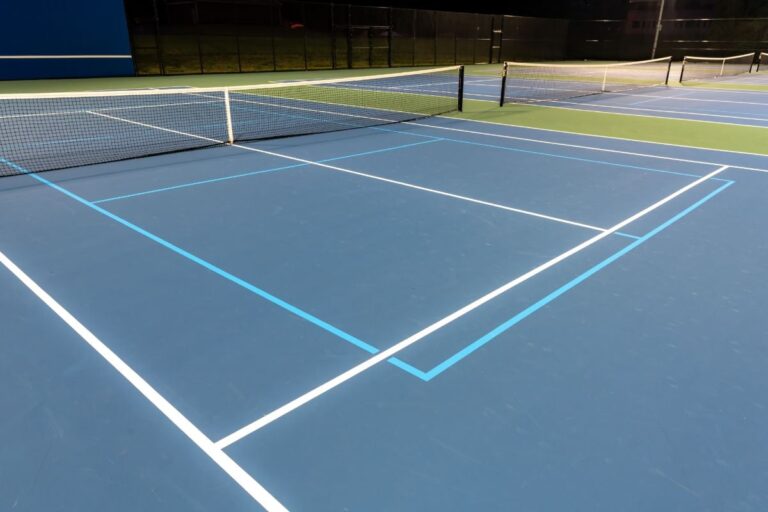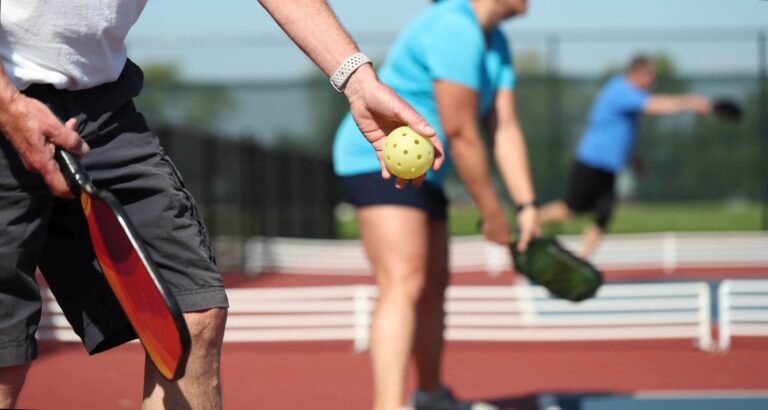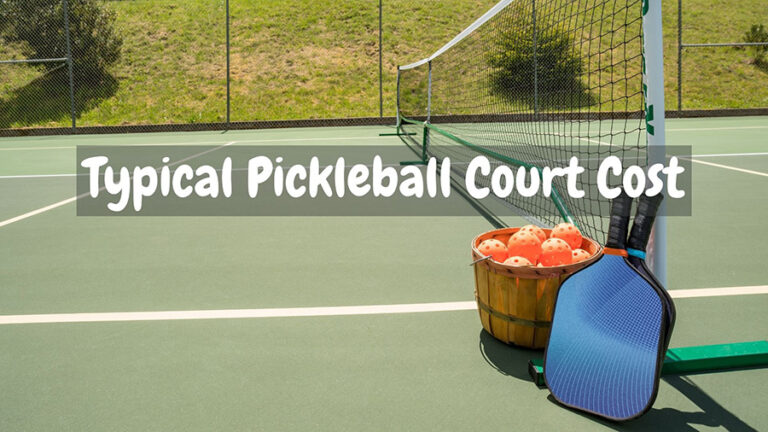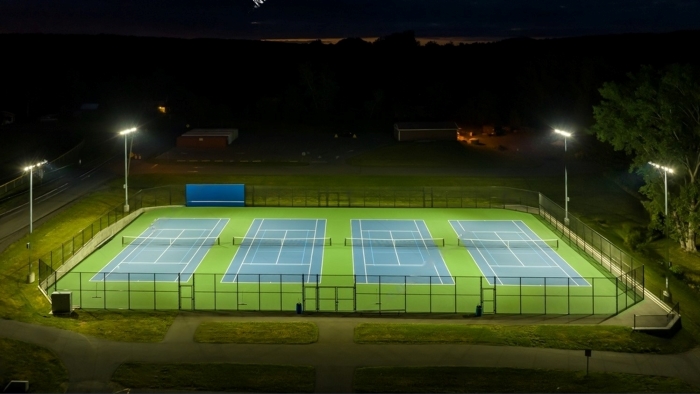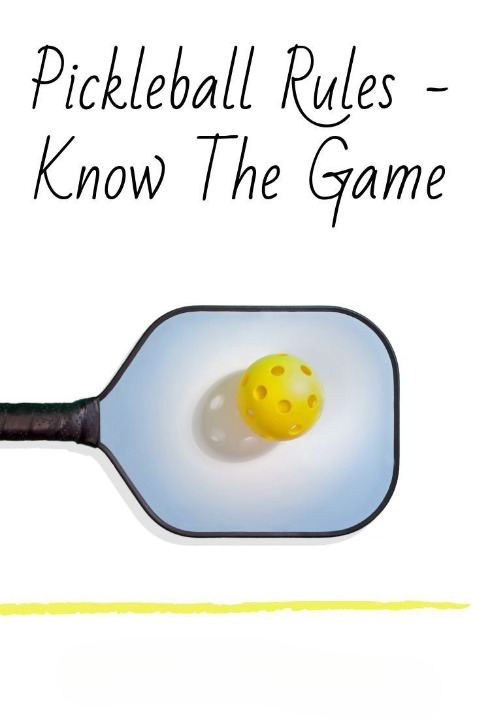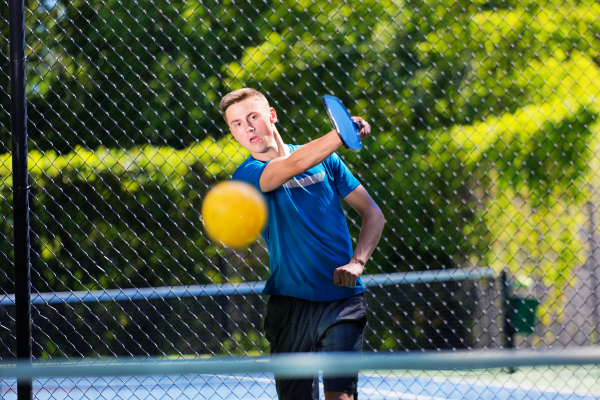What Is the Best Material for a Pickleball Paddle? A Comprehensive Guide
what is the best material for a pickleball paddle? Your Ultimate Guide
The best pickleball paddle material depends on your skill level, playing style, and personal preferences. For beginners and recreational players, composite/fiberglass paddles offer a good balance of power, control, and affordability. Advanced and professional players often prefer graphite paddles for their increased power, larger sweet spot, and superior performance. Carbon fiber paddles, while expensive, provide the ultimate combination of power, control, and feel for those with a high skill level.
Key Takeaways
- Pickleball paddle materials significantly impact your performance and playing style.
- The three main paddle face materials are composite/fiberglass, graphite, and carbon fiber, each with unique characteristics and benefits.
- Composite/fiberglass paddles are affordable, offer good control, and are ideal for beginners and recreational players.
- Graphite paddles provide more power, a larger sweet spot, and are preferred by advanced and professional players.
- Carbon fiber paddles are the most expensive, offering the best power, control, and feel, but require a high skill level to use effectively.
- Other factors to consider when choosing a paddle include skill level, playing style, budget, and durability.
- Paddle core materials, such as polymer foam and aluminum, also affect performance and feel.
- Proper maintenance and care, including cleaning, storage, and professional repairs, can extend the life of your pickleball paddle.
- Trying out different paddle materials is the best way to find the perfect fit for your individual needs and preferences.
what is the best material for a pickleball paddle?
Key Materials Used in Pickleball Paddles
When it comes to pickleball paddle materials, there are three main options for the paddle face: composite/fiberglass, graphite, and carbon fiber. Let’s take a closer look at each material and its characteristics.
Composite/Fiberglass
- Affordable option for beginners and recreational players
- Offers a good balance of power and control
- Less stiff compared to other materials, resulting in a larger sweet spot
- Forgiving nature makes them excellent for those new to the sport or playing casually
Graphite
- Preferred choice for advanced and professional players
- Provides a larger sweet spot for control and accuracy
- Offers a stiffer feel, translating to more powerful shots
- May take some time to adjust to due to its stiffness
- Allows for more speed and spin on shots, giving an edge over opponents
Carbon Fiber
- Most expensive option, typically used in high-end paddles
- Lightweight and offers the greatest power and control among all materials
- Has a small sweet spot and a stiff feel, requiring the most skill to use effectively
- Best suited for experienced players looking for ultimate performance
Wood
- Original material used in pickleball, largely replaced by modern materials
- Heavier, leading to fatigue during longer play sessions
- Smaller sweet spot and offers less power and control than other materials
- Most affordable option, good for casual players or those on a tight budget
Aluminum
- Not as common as other materials
- Lightweight and durable, good for players who want a long-lasting paddle
- Offers good power and control, but not as much as graphite or carbon fiber
- Can produce a loud “ping” sound when hitting the ball, which some players may find distracting
Choosing the Right Material for Your Needs
Now that you have a better understanding of the different paddle materials available, let’s discuss how to choose the right one for your specific needs.

Skill Level
Your skill level is an important factor to consider when selecting a paddle material. Here are some general recommendations based on your experience and proficiency:
| Skill Level | Recommended Paddle Material |
|---|---|
| Beginner | Composite/Fiberglass |
| Intermediate | Composite/Fiberglass or Graphite |
| Advanced | Graphite or Carbon Fiber |
Playing Style
Your playing style is another key factor to consider when choosing a paddle material. Here’s what to look for based on your preferences:
| Playing Style | Recommended Paddle Material |
|---|---|
| Power Players | Graphite or Carbon Fiber |
| Control Players | Composite/Fiberglass or Softer Graphite |
Budget
Your budget is also an important consideration when choosing a pickleball paddle. Here’s a general breakdown of paddle materials from most affordable to most expensive:
- Composite/Fiberglass
- Graphite
- Carbon Fiber
Keep in mind that while higher-priced paddles often offer better performance, you don’t necessarily need to break the bank to find a paddle that suits your needs. It’s more important to find a paddle that feels comfortable and complements your playing style.
Durability
The durability of your paddle is another factor to keep in mind. If you play frequently or have a tendency to be rough on your equipment, you’ll want a paddle that can withstand regular use.
- Composite/fiberglass and graphite paddles are generally durable and can last a long time with proper care.
- Carbon fiber paddles, while offering excellent performance, may be more prone to damage if not handled carefully.
Additional Considerations
While the paddle face material is the most important factor to consider when choosing a pickleball paddle, there are a few other aspects to keep in mind.
Paddle Core
The paddle core, which is the layer beneath the paddle face, can also affect your paddle’s performance. The two most common core materials are polymer foam and aluminum.
- Polymer foam cores are lightweight and offer good power and feel.
- Aluminum cores are more durable and provide a slightly stiffer feel.
The choice between the two is largely a matter of personal preference, and most players focus more on the paddle face material when making their decision.
Weight
The weight of your paddle can also impact your game. Most pickleball paddles weigh between 6 and 14 ounces, with the average being around 8 ounces.
- Lighter paddles offer more maneuverability and are easier to control.
- Heavier paddles provide more power behind your shots.
Experiment with different weights to find the one that feels most comfortable and suits your playing style.
Popular Pickleball Paddle Materials
In addition to the paddle face materials discussed earlier, there are a few popular materials used for the paddle core and edges.
- Polymer Honeycomb Core
- Characteristics: Lightweight, strong, and offers good power and control
- Benefits: Durable and provides a nice balance of power and touch
- Nomex Honeycomb Core
- Characteristics: Similar to polymer cores but slightly firmer and offers more power
- Benefits: Good for players who want a bit more power without sacrificing too much control
- Aluminum Honeycomb Core
- Characteristics: Lightweight and offers excellent power and durability
- Benefits: Ideal for players who prioritize power and want a paddle that can withstand frequent use
what is the best material for a pickleball paddle?
Pickleball Paddle Material Comparisons
To help you better understand the differences between the various paddle materials, let’s compare them head-to-head.
Wood vs. Graphite
- Wooden paddles are heavier and offer less power and control than graphite paddles.
- Graphite paddles are lighter, more durable, and provide better performance overall.
- Unless you’re on a very tight budget or prefer the traditional feel of a wooden paddle, graphite is the better choice.
Graphite vs. Composite
- Graphite paddles offer more power and a larger sweet spot than composite paddles.
- Composite paddles are more affordable and provide a softer feel, which some players prefer.
- If you’re an advanced player looking for maximum performance, graphite is the way to go.
- If you’re a beginner or intermediate player who prioritizes control and a forgiving feel, composite is a good choice.
Composite vs. Aluminum
- Composite paddles are more affordable and offer a softer feel than aluminum paddles.
- Aluminum paddles are more durable and provide slightly more power.
- The choice between the two largely comes down to personal preference and budget.
Composite/Fiberglass vs. Graphite vs. Carbon Fiber
| Material | Affordability | Power | Control | Skill Level |
|---|---|---|---|---|
| Composite/Fiberglass | Most affordable | Good balance | Best control and touch | Beginners and intermediate players |
| Graphite | Moderately expensive | More power | Larger sweet spot | Advanced players |
| Carbon Fiber | Most expensive | Best power | Best control and feel | Requires high skill level |
Paddle Material Impact on Performance
The material of your pickleball paddle can greatly impact your performance on the court. Here’s how each material affects key aspects of your game:
| Material | Power | Control | Spin | Touch |
|---|---|---|---|---|
| Graphite | High | Moderate | High | Moderate |
| Carbon Fiber | High | High | High | Moderate |
| Composite/Fiberglass | Moderate | High | Moderate | High |
| Aluminum | Moderate | Low | Low | Low |
| Wood | Low | Low | Low | Low |
Paddle Material and Noise Level
The material of your paddle can also affect the noise level during play. Here’s what to expect from each material:
- Quiet Materials: Composite/fiberglass and graphite paddles tend to be the quietest, producing a softer sound when hitting the ball.
- Loud Materials: Aluminum paddles are known for producing a loud “ping” sound, which some players find distracting. Wooden paddles also tend to be louder than composite/fiberglass and graphite paddles.
Paddle Material and Durability
The durability of your paddle is an important consideration, especially if you play frequently.
- Most Durable Materials: Graphite and aluminum paddles are the most durable and can withstand regular use without showing significant wear and tear.
- Least Durable Materials: Carbon fiber paddles, while offering excellent performance, may be more prone to damage if not handled carefully. Wooden paddles are also less durable than other materials and may warp or crack over time.
Professional Player Preferences
Many professional pickleball players have specific preferences when it comes to paddle materials.
Top Players’ Paddle Material Choices
Most professional players use graphite or carbon fiber paddles due to their superior performance and power. Some notable players and their paddle choices include:
- Ben Johns (graphite)
- Simone Jardim (carbon fiber)
- Tyson McGuffin (graphite)
- Jessie Irvine (graphite)
Reasons Behind Their Preferences
Professional players choose graphite and carbon fiber paddles for their exceptional power, control, and spin potential. These materials allow them to execute advanced shots and strategies with precision and consistency.
Paddle Material Maintenance and Care
To ensure your pickleball paddle lasts as long as possible, it’s important to take proper care of it. Here are some tips for maintaining your paddle based on its material:
- Cleaning: Regularly clean your paddle face with a damp cloth to remove dirt and sweat. For tougher grime, use a mild soap solution. Avoid using abrasive cleaners or scrubbing too hard, as this can damage the surface of your paddle.
- Storage: Store your paddle in a cool, dry place away from direct sunlight and extreme temperatures. Avoid leaving your paddle in hot cars or damp basements, as this can cause warping or damage to the materials.
- Repair: If your paddle becomes damaged, such as developing cracks or chips, it’s best to have it repaired by a professional. Attempting to fix it yourself may void the manufacturer’s warranty and potentially cause further damage.
Frequently Asked Questions about Pickleball Paddle Materials
Q: What is the most popular paddle material?
A: Graphite is currently the most popular paddle material among pickleball players due to its excellent combination of power, control, and durability.
Q: What paddle material is best for beginners?
A: Composite/fiberglass paddles are often recommended for beginners because they offer a good balance of power and control, have a larger sweet spot, and are more affordable than other materials.
Q: What paddle material offers the most power?
A: Carbon fiber and graphite paddles offer the most power, allowing players to hit the ball with more speed and force.
Q: What paddle material provides the best control?
A: Composite/fiberglass paddles provide the best control and touch, making them ideal for players who prioritize precision and accuracy over raw power.
Q: What paddle material is the most affordable?
A: Composite/fiberglass paddles are generally the most affordable option, followed by wooden paddles. Graphite, carbon fiber, and aluminum paddles tend to be more expensive.
Conclusion
Choosing the best pickleball paddle material depends on several factors, including your skill level, playing style, budget, and personal preferences. Composite/fiberglass paddles are a great choice for beginners and players who prioritize control and touch, while graphite and carbon fiber paddles are ideal for advanced players seeking maximum power and performance. Aluminum and wooden paddles, while less popular, can still be suitable for certain players based on their specific needs and preferences.
When selecting a paddle, it’s crucial to consider your individual playing style and goals. If you’re a power player who relies on strong, aggressive shots, a graphite or carbon fiber paddle may be the best fit. If you prefer a more strategic, control-based approach, a composite/fiberglass paddle might be the way to go.
Ultimately, the best way to find the perfect paddle is to try out different materials and see which one feels the most comfortable and natural in your hands. Many sporting goods stores and pickleball facilities offer demo paddles, allowing you to test out various options before making a purchase.
Remember, while the paddle material is important, it’s not the only factor that affects your performance. Practice, technique, and strategy are equally crucial in improving your pickleball game. With the right combination of equipment and skills, you’ll be well on your way to becoming a formidable force on the pickleball court.

